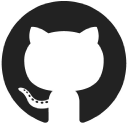How We Started A $550K/Month Wireframing Software Company
Hello! Who are you and what business did you start?
Hi, I’m Natalie Gould the CFO at Balsamiq. First, it’s important to note I didn’t start our business. I’ve been honored to help build it with my colleagues for the last soon-to-be 10 years.
We make Balsamiq Wireframes (formerly Balsamiq Mockups), a low-fidelity wireframing tool for designing software. My long-time friend Giacomo “Peldi” Guilizzoni founded the company in 2008, and I joined the team as employee six in 2010. While Peldi initially intended Balsamiq to be a one-person business, our team has grown today to 33 people, located in two US states and four European countries, with current revenue of about $550,000 a month.
We sell our software world-wide in electronically downloaded versions, subscription-based Software as a Service (SaaS), as a standalone tool, as well as integrations...

Download the report and join our email newsletter packed with business ideas and money-making opportunities, backed by real-life case studies.

Download the report and join our email newsletter packed with business ideas and money-making opportunities, backed by real-life case studies.

Download the report and join our email newsletter packed with business ideas and money-making opportunities, backed by real-life case studies.

Download the report and join our email newsletter packed with business ideas and money-making opportunities, backed by real-life case studies.

Download the report and join our email newsletter packed with business ideas and money-making opportunities, backed by real-life case studies.

Download the report and join our email newsletter packed with business ideas and money-making opportunities, backed by real-life case studies.

Download the report and join our email newsletter packed with business ideas and money-making opportunities, backed by real-life case studies.

Download the report and join our email newsletter packed with business ideas and money-making opportunities, backed by real-life case studies.























